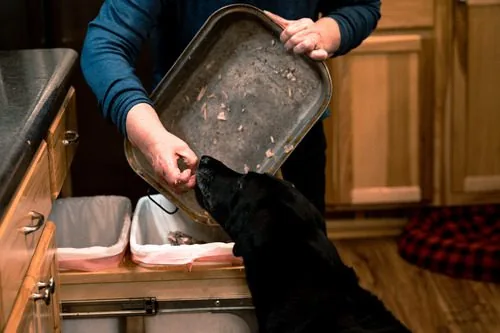Have you noticed your dog getting a little stiffer as he gets older? Does he seem to be in pain when he stands up, runs, or jumps up onto the furniture? If you see this happening in your dog, it can be a sign that he’s got arthritis. Arthritis is very common in older dogs, but if you think your dog may have it, you will need to take him to the veterinarian to be sure. Since the symptoms of dog arthritis may also be symptoms of other conditions and diseases, you’ll need your vet to rule out these possibilities before proceeding with treatment.
Read through the information below to help you determine whether or not you think your dog may have arthritis. You can then use this knowledge to talk to your veterinarian about the possibilities.
Symptoms of Dog Arthritis in White Bear Lake, MN
This is not an exhaustive list, but it includes most of the common symptoms of arthritis in dogs. Remember that these symptoms may also be signs of other conditions.
- Slower walking, moving, and playing.
- Dogs who have arthritis are less likely to want to play or move around much because of the pain. They may also fall behind more on long walks than they used to, or may be unable to take very long walks at all.
- Difficulty jumping or climbing stairs.
- When a dog has arthritis, he may have trouble climbing more than a couple of stairs at a time. He may also not be able to jump up onto furniture anymore, or may be unable to get down off of furniture afterward.
- Stiffness or signs of pain when standing up after sleep.
- When dogs have arthritis, they have trouble standing up again after they’ve been asleep for a long time. Long periods of sleep make their joints stiffer and contribute to this inability to move or severely reduced range of motion as well.
- Crying out when touched or picked up.
- If your dog cries out or yelps when you touch him, this is a sign there is something wrong. There may be many issues that cause this, but arthritis is one of them. If you used to be able to pick up your dog but he now yelps in pain when you try, this is another sign.
- Licking joints.
- Dogs may lick their joints frequently if they have arthritis in an attempt to soothe the pain and burning they feel. This, like many other symptoms on this list, may also be a sign of other problems, so veterinary checkups are required if you notice this behavior.
- Limping or dragging a leg.
- If you see your dog limping a lot or dragging one of his legs, this can be a sign he’s dealing with severe dog arthritis. It’s also a sign of sprains, broken bones, pulled muscles, and other injuries, so keep this in mind.
- Aggressive or guarded behavior when this is not normal.
- If your dog is not normally aggressive or guarded, but he becomes this way along with showing signs of pain or stiffness, this is a good way to tell he may be dealing with arthritis. Don’t push your dog in this situation, but make sure you take him to the vet for treatment as soon as possible.
Treatments for Dog Arthritis in White Bear Lake, MN
These are just some of the treatment options available for dog arthritis in White Bear Lake, MN. Your veterinarian will give you more information about which treatment plans are best for your dog.
- Exercise therapy
- Some dogs with mild or early stage arthritis may simply need exercise therapy to help the problem. Enough exercise of the right type can make a big difference for dogs whose arthritis hasn’t progressed much yet.
- Diet
- Dogs who are overweight or have bad dietary habits may see some relief from eating an arthritis-specific diet. Your vet can give you more information about this possibility.
- Changes in home setup
- Your dog may need some changes to your home setup and to his environment in order to be more comfortable now that he has arthritis. For example, giving him a better quality bed and keeping him warm are two ways you can easily help your dog feel better.
- Physical therapy
- Your dog may need specific, targeted physical therapy to help him feel better. This will require working with a vet and may require working with a veterinary physical therapist as well, depending on the severity of your dog’s case. Physical therapy sometimes includes hot/cold therapy along with exercises, mobility training, and more.
- Injections
- Osteoarthritis injections may help your dog feel better, especially after a severe arthritic flare-up. These shots occur weekly for four weeks and then about once or twice a year, depending on your vet’s recommendations. They can help manage your dog’s condition long-term as well as short-term.
- NSAIDs
- NSAIDs are usually given orally, but this may vary depending on your dog’s needs. Your vet will need to prescribe the safest amount of this type of medication to prevent liver or kidney damage in your dog. Never give your dog over-the-counter human NSAIDs without your vet’s recommendation and guidance.
- Surgery
- Surgery is not very common for dogs with arthritis, but it may be the only option in some extreme circumstances. Not every dog is a good candidate for arthritis surgery, however.
Now that you’ve had a chance to learn a little bit more about arthritis in dogs, you can determine whether or not you think this is a concern for your pet. If so, you should speak to your veterinarian as soon as possible. Dog arthritis is manageable, and although it doesn’t have a cure, your dog can live a long, healthy, full life even if he needs to be on a treatment plan for his arthritis.
With the information listed above, you should be armed and ready to talk to your vet and help your dog feel his best as soon as possible. Call us at (651) 426-2246 today to discuss your dog’s arthritis treatment in White Bear Lake, MN!
Recent Posts
About Birch Lake Animal Hospital
The staff at Birch Lake Animal Hospital seeks to provide the best possible medical care for our highly-valued patients and clients.





